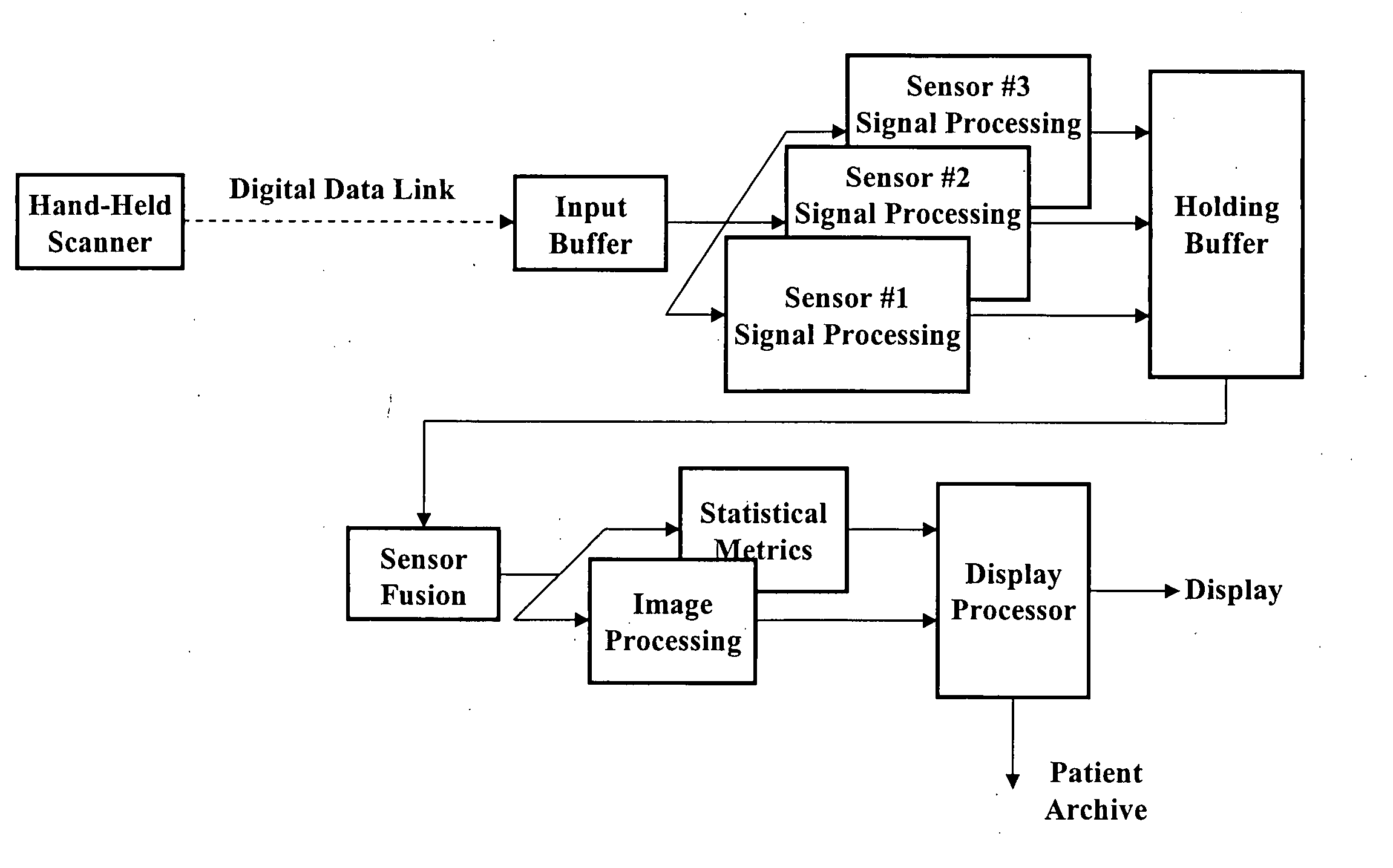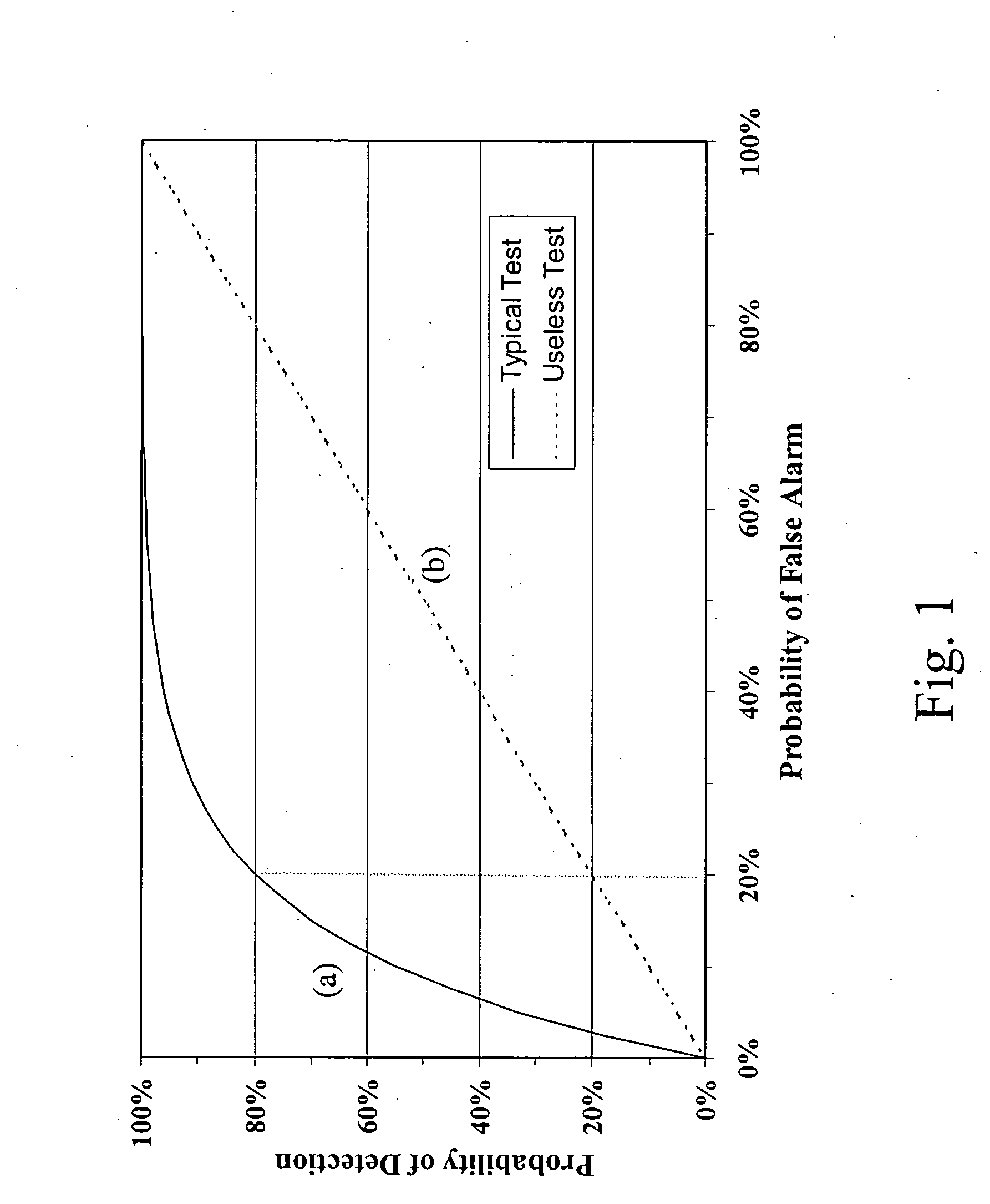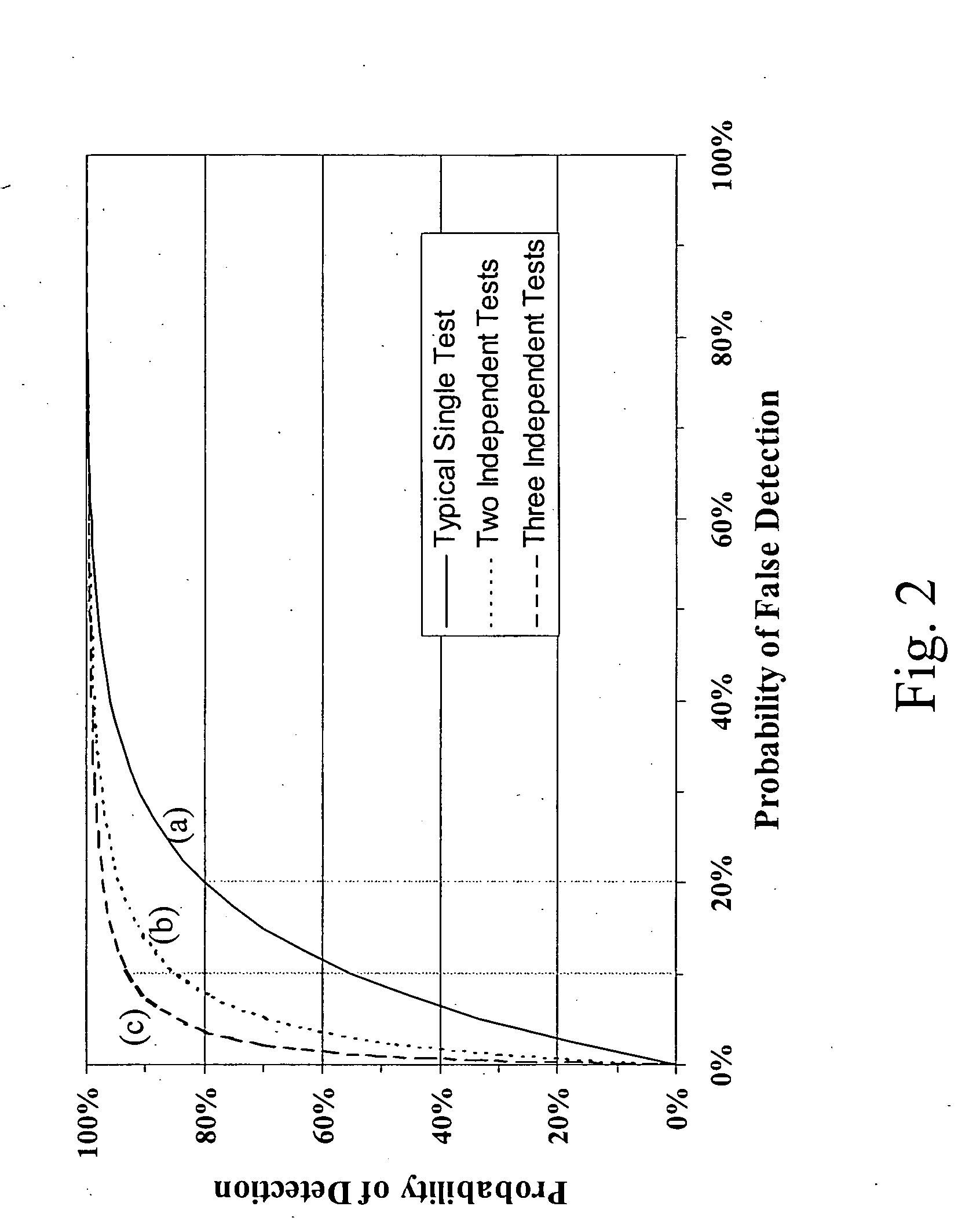Multi-sensor breast tumor detection
a multi-sensor, breast cancer technology, applied in the field of cancer early detection system and method, can solve the problems of insufficient, possible terrible consequences, limited reliability of x-ray mammogram, etc., and achieve the effect of increasing the cost/complexity of the multi-sensor aperture and enhancing specificity
- Summary
- Abstract
- Description
- Claims
- Application Information
AI Technical Summary
Benefits of technology
Problems solved by technology
Method used
Image
Examples
Embodiment Construction
[0124] A hand held instrument, as shown in FIG. 10, can be used for screening patients. FIG. 10(a) depicts a flashlight-style scanner, while FIG. 10(b) shows a palm-fit scanner. For propagating probing methods, such as ultrasonic, electromagnetic or optical waves, a multi-sensor aperture would be located at one end of a standoff region whose purpose is to enable initial diffraction, diffusion, or otherwise spreading of the beam or beams, as required, between the aperture and the breast volume to be examined. The instrument face, at the opposite end of the standoff region from the aperture, contacts the breast. For non-propagating probing methods, such as electrical resistance measurement, suitable non-perturbing electrodes such as indium-tin oxide, or current loops, etc., would be located on the instrument face. Signal-conditioning electronics and some signal-processing circuitry is preferably located in the handle of both embodiments, although signal processing circuitry is prefera...
PUM
 Login to View More
Login to View More Abstract
Description
Claims
Application Information
 Login to View More
Login to View More - R&D
- Intellectual Property
- Life Sciences
- Materials
- Tech Scout
- Unparalleled Data Quality
- Higher Quality Content
- 60% Fewer Hallucinations
Browse by: Latest US Patents, China's latest patents, Technical Efficacy Thesaurus, Application Domain, Technology Topic, Popular Technical Reports.
© 2025 PatSnap. All rights reserved.Legal|Privacy policy|Modern Slavery Act Transparency Statement|Sitemap|About US| Contact US: help@patsnap.com



